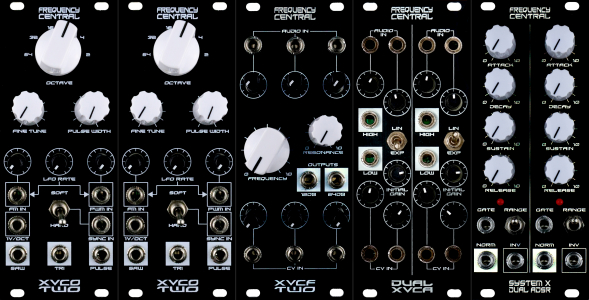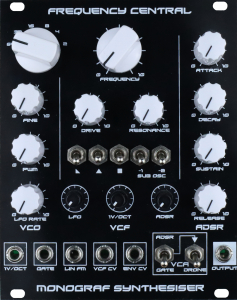Description
Klang Stadt is the latest FC iteration of Electric Druid’s VCDO digital wavetable oscillator.
It’s a Wavetable VCO with tons of features: CV’d interpolating waveforms, onboard LFO, CV’d subosc waveforms and octaves, CV’d glide, bitcrushing and more!
Frequency The Frequency CV input accepts 0-5V control voltages, quantized to semitones, to cover the MIDI note range 0-63. It is possible to limit the CV input with the CV attenuator. The basic frequency range of the VCDO is ten octaves from MIDI Note 0 to MIDI Note 120 (8.18Hz to 8372Hz), and can be selected by the manual Frequency knob.
Detune The Detune CV input is not quantised, and allows for -5V to +5V CV to modulate +/-8 semitones. The manual Detune knob allows adjustments to be made +/-100 cents.
Waveform The VCDO section has 16 waveforms which you’re unlikely to have seen before, arranged as a wavetable. The VCDO is able to crossfade from one to the next, creating a wavetable which you can scan through under voltage control, -5V to +5V. It would have been easy to include standard waveforms like ramps and triangles, but there are many oscillators that produce those. This oscillator has its own character and provides something different.
Sub One and Sub Two As well as the main oscillator, there is also a sub oscillator with 8 waveforms. Each waveform can be selected at one of four octaves, either +1 octave (above the main osc pitch!), in unison, -1 octave, or -2 octaves. Additionally, the Sub waveform can be selected externally by CV, -5V to +5V. Sub Two is a wavefolded version of Sub One, using a similar circuit to a ramp to triangle convertor.
Glide Klang Stadt also includes a glide/portamento effect, glide times range from 12ms/octave to 2.4secs/octave. Turning the Glide knob to minimum switches the glide effect off. Additionally, Glide can be externally controlled by any gate source, 0V = Glide off, 5V = Glide on.
Crush The Crush knob controls the sample bit resolution of the output (ie bitcrushing). This can be reduced from 8-bit down to 1-bit in eight steps.
Wave, Sub One and Sub Two Outputs 8-bit, 62.5KHz sample output rate. The internal waveforms and calculations are 8-bit, and new samples are output via the on-chip PWM modules at 62.5KHz. The PWM modules’ outputs are at 125KHz.
It features a number of advantages over our previous ‘Waverider’ design:
• improved PWM filtering
• addition of Sub Two output: a wavefolded version of Sub One, using a similar circuit to a ramp to triangle convertor.
• addition of Klang output: this is a pulse wave 2 quadrant multiplication of Wave out and Sub One out.
• addition of Xmod feature: Xmod uses one to the Subs to FM the Wave’s waveshape.
• onboard LFO for riding the waves
If the Klang output worries you, you can cover it over with a bit of masking tape. That’s what I’ve done with mine.



